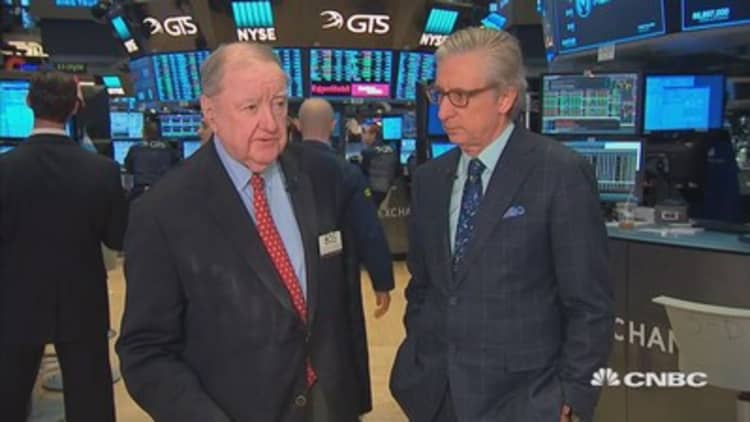New Federal Reserve Chairman Jerome Powell is less than a week away from delivering his first news conference, an event that some Wall Streeters are anticipating will be a more regular occasion.
Begun back in 2011, the quarterly parleys with reporters rarely provide any market-moving news, instead serving as an opportunity for central bank chiefs to carefully convey monetary policy direction without dropping any surprises that could jolt investors.
What they have come to be, though, are the only "live" meetings during the year — in other words, the exclusive occasions when there's any chance that the policymaking Federal Open Market Committee will move on interest rates.
Investors believed the committee wouldn't hike at a meeting without a news conference afterward for the chair to explain the rationale. Powell's predecessors, Ben Bernanke and Janet Yellen, occasionally pointed out that an impromptu conference could be scheduled. But that never occurred.

There's a growing anticipation that Powell will remove the restriction of raising rates only at quarterly meetings and start holding news conferences after each of the eight meetings the FOMC holds each year. That would put the U.S. central bank chief in line with others around the globe, like Mario Draghi at the European Central Bank.
"While previous Chairs Yellen and Bernanke focused on being highly prepared for every press conference (making each one quite an endeavor for Chair and staff alike), Chair Powell has already shown in testimony he may be more willing to speak off the cuff, taking a more casual approach," Ellen Zentner, chief economist at Morgan Stanley, said in a note to clients.
When the move actually will be announced is unclear. Zentner said the public disclosure could come as late as the December meeting, but the committee could be discussing it now with plans to implement it at the beginning of 2019. Zentner is not the only Fed watcher to expect the change to take place.
Moving to regular newser schedules is but one part of an incrementally more hawkish approach Powell is expected to assume.
The chairman, who took over in early February, faces different circumstances than Yellen or Bernanke. He takes over with the U.S. economy expected to accelerate after years of anemic post-recession growth, and as investors look for the Fed to continue to increase rates.
Wall Street chatter has indicated some worry that Powell may be forced to push the Fed to tighten too quickly should inflation pressures heat up.
"After having delivered on its promises in 2017, which included hiking its target range a total of three times and initiating balance sheet reduction, we expect the new Chair to move seamlessly into the role by keeping the status quo — but with a hawkish tilt," Zentner said.
One way that tilt could play out is in the quarterly summary of economic projections after the two-day FOMC meeting concludes Wednesday. Specifically, there's anticipation that the so-called dot-plot, where individual committee members make their estimates for the future path of rates, will shift upward.
A key driver in that movement is normally dovish Governor Lael Brainard, who recently spoke about how aggressive fiscal policy — tax cuts and higher spending — will be economic tailwinds.
"The apparent shift in her position could mark an important turning point given her status as one of the most prominent doves on the Committee," Michael Pearce, senior U.S. economist at Capital Economics, said in a note. "In December, six officials forecast three rate hikes in 2018 and four anticipated four rate hikes or more. That balance may well shift at the March meeting."
Pearce is forecasting four rate hikes this year, a bit more aggressive than the consensus of three.
Fed funds futures market point the near-certainty of a move at next week's meeting, with two more indicated through the year and a 1 in 3 chance for a fourth increase in December. That could change, though, depending on the tone that comes out of Powell and the FOMC.
WATCH: Market somewhat confused about Powell, tariffs



